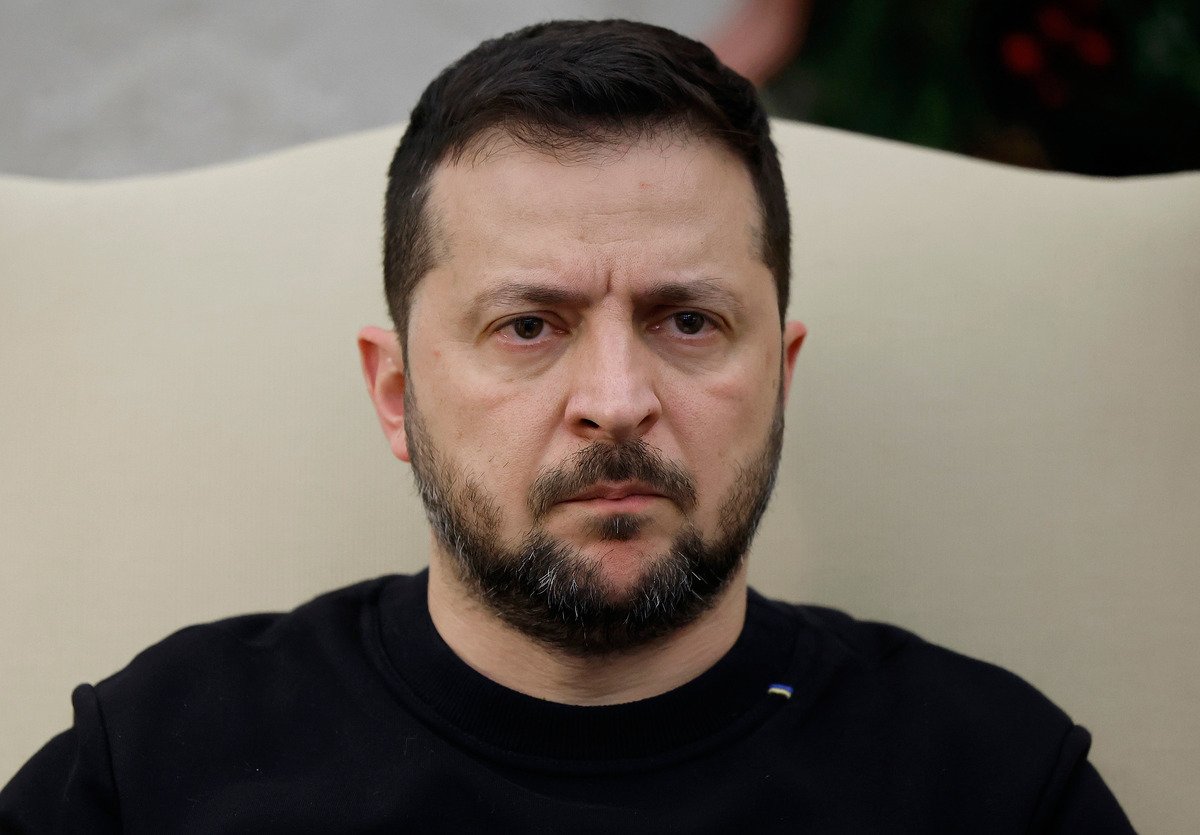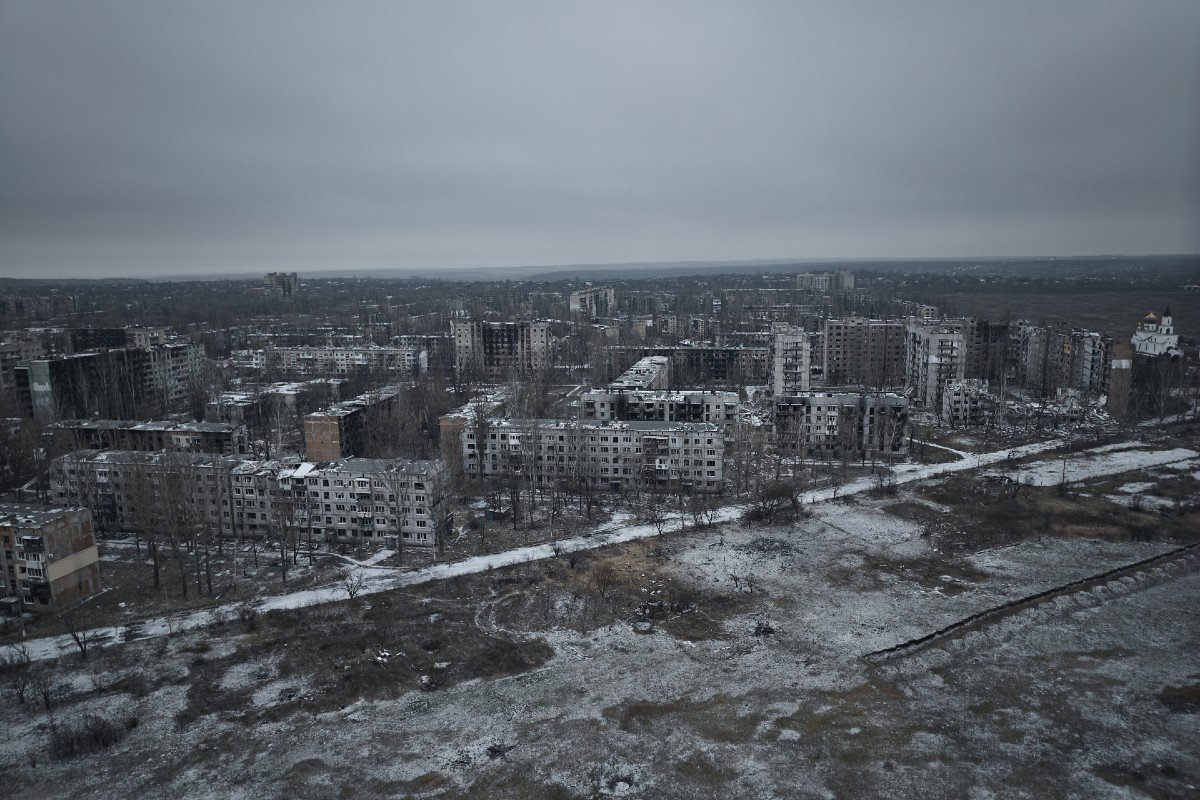Ellie Cook
As Kyiv stares down a new year offering up little possibility of an end to its war with Russia, Ukrainian leader Volodymyr Zelensky has reason to feel less than festive as the world prepares to celebrate Christmas.
Fresh from a visit to the U.S. that failed to unlock new military aid after a Congressional stalemate, Zelensky is likely looking towards what 2024 will hold for a Ukraine fast approaching two years of grueling conflict.
There are clear concerns for Kyiv. Russia has been creeping around the Donetsk town of Avdiivka, Ukraine's NATO allies are running out of ammunition stocks they can ship to the front lines and dissenting Republican voices in the U.S. are increasingly asking whether these supplies should be heading there. Through it all, Ukraine has to keep shooting down Russia's seemingly never-ending waves of Shahed drones.
It's a tall order for a country battling harsh winter conditions as well as Russia's onslaught.
Will Avdiivka fall?
Ukraine has fought hard against Russia's efforts to encircle the Donetsk town of Avdiivka, but Moscow has inched further around the industrial settlement almost every day. Russia launched its offensive on the town on October 10, sparking some of the heaviest and bloodiest fighting of the war so far.
And Russia is not faltering in its attempts to surround Avdiivka, the Ukrainian General Staff reveal each day in operational updates. Ukrainian forces had "successfully repelled" 57 Russian attacks in the areas around the Avdiivka section of the front line the previous day, Ukraine's military said on Thursday.

Ukrainian President Volodymyr Zelensky talks to reporters at the White House in Washington, D.C., on December 12, 2023. Zelensky is likely looking towards what 2024 will hold for a Ukraine fast approaching two years of gruelling war.
But Russia is gaining territory. Moscow's troops advanced southeast of Stepove — a village just under two miles northwest of Avdiivka — on Wednesday, according to think tank the Institute for the Study of War (ISW).
The town was heavily fortified, a Ukrainian stronghold with nearly a decade of experience on the front line against Russian and proxy forces. Western assessments were initially, overwhelming positive in Ukraine's favor, but Russia has made a slow, painful advance around Avdiivka.
It has come at a heavy cost for Moscow, but will nonetheless worry Ukraine's commanders and politicians. The weeks between October 10 and late November had "likely seen some of the highest Russian casualty rates of the war so far," the British Defense Ministry said last month.
Since Moscow embarked on its offensive to encircle Avdiivka, it has sustained more than 13,000 casualties around the town, National Security Council spokesperson Adrienne Watson told CNN this week.

A panorama of the Ukrainian city of Avdiivka is seen from a drone on December 7, 2023. Moscow has embarked on a costly bid to encircle the town.
"This is now a war of attrition and the Russians seem to be much more willing to sacrifice massive numbers of soldiers in the process," said Dan Rice, a former aide to Ukraine's commander-in-chief and current president of American University Kyiv.
Ukraine's on the defensive in Avdiivka, and has fended off a much larger force, he told Newsweek.
"If they are given enough ammunition, they will likely be able to continue destroying the Russian army," he added. "The big question is if the West will continue to provide enough ammo to kill wave after wave, and attack after attack, of Russian units."
Ammunition and supplies
The war has not just stretched Ukraine's supplies, but that of its allies. NATO officials have been warning for months that stocks are running low, but Ukraine now depends on its Western backers for much of the ammunition fired each day.
European Commission President Ursula von der Leyen said in late November that the bloc had either delivered or would send a total of 480,000 artillery rounds to Ukraine, with European Union countries upping their production of ammunition.
However, NATO's most senior official, Admiral Rob Bauer, said in early October that the "bottom of the barrel is now visible" for the alliance's ammunition stocks.
Shell hunger, or a lack of ammunition, is visible in Avdiivka.
"I'm not shooting any more; only when it's a critical situation," one Ukrainian commander in the country's 47th Brigade told London's The Times last week.
Rationing ammunition limits Ukraine's forces, but there could be bigger problems on the horizon with Kyiv's pipeline of military aid.
The Western support question
Despite Zelensky's rallying calls in the heart of Washington, Kyiv will be looking with deep concern at the voices in Congress blocking future military aid packages for its war effort.
U.S. President Joe Biden used Zelensky's trip to the U.S. earlier this week to reaffirm the country's support for Ukraine's fight.
"I will not walk away from Ukraine, and neither will the American people," Biden said on Tuesday.
However, Biden's words don't necessarily resonate with all U.S. lawmakers. Many Republicans are blocking a $110 billion funding bill, that includes around $60 billion in aid for Ukraine, because they want tighter security measures at the U.S. southern border.
"I think the American people agree with us that national security begins at our own borders," Republican representative and speaker Mike Johnson said on Tuesday, adding: "We have to maintain our own sovereignty, that we can project peace through strength and help our friends."
The U.S. is the single biggest contributor of military aid to Ukraine, and has committed more than $44 billion in security assistance to Kyiv since the outbreak of all-out war in the country in February 2022.
But time is running out—and the Biden administration and Kyiv know it. Earlier this month, the White House warned that "by the end of the year we will run out of resources to procure more weapons and equipment for Ukraine and to provide equipment from U.S. military stocks."
"Cutting off the flow of U.S. weapons and equipment will kneecap Ukraine on the battlefield," the White House's budgeting head, Shalanda Young, said in a letter to Congress on December 4.
"There is no magical pot of funding available to meet this moment. We are out of money—and nearly out of time," Young wrote.
Watching the skies
Against this backdrop, Ukraine has a constant eye on its skies, contending with a long-anticipated—but nonetheless challenging—barrage of Russian missiles and the Iranian-designed Shahed kamikaze drones.
Russia launched 42 Shahed drone strikes on Ukraine from 7 p.m. local time (12 p.m. ET) on Wednesday, Ukraine's air force said on Thursday. Just one of the Shaheds made it through the country's air defenses, the Ukrainian military said. In late November, Russia launched 75 Shahed drones in one night, Ukraine said. This was the largest recorded Shahed attack of the war.
Russia also launched an overnight slew of 10 ballistic missiles on Kyiv in the early hours of Wednesday morning, Zelensky said.
"All of them were shot down," he said, adding: "Russia has proven once again that it is a heinous country."
"There will be a response," he said.
A total of 53 people were injured in Kyiv, with 20 admitted to hospital, Kyiv mayor Vitali Klitschko said.
The strikes increase Ukraine's air defense needs, particularly in the winter months that Russia is using to target Ukraine's energy infrastructure.
"President Biden and I just agreed to work on increasing the number of air defense systems in Ukraine, and the terrorist state demonstrated how critical this decision is," Zelensky said on Wednesday.
With no end in sight, Ukraine is likely going into the new year with grit and determination, but no small amount of apprehension.
No comments:
Post a Comment